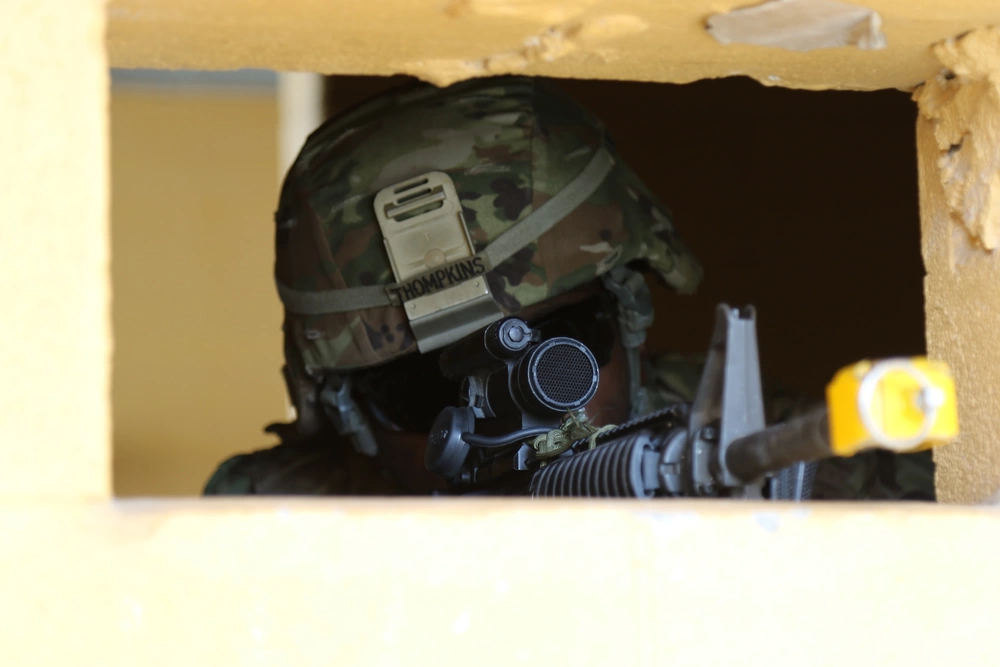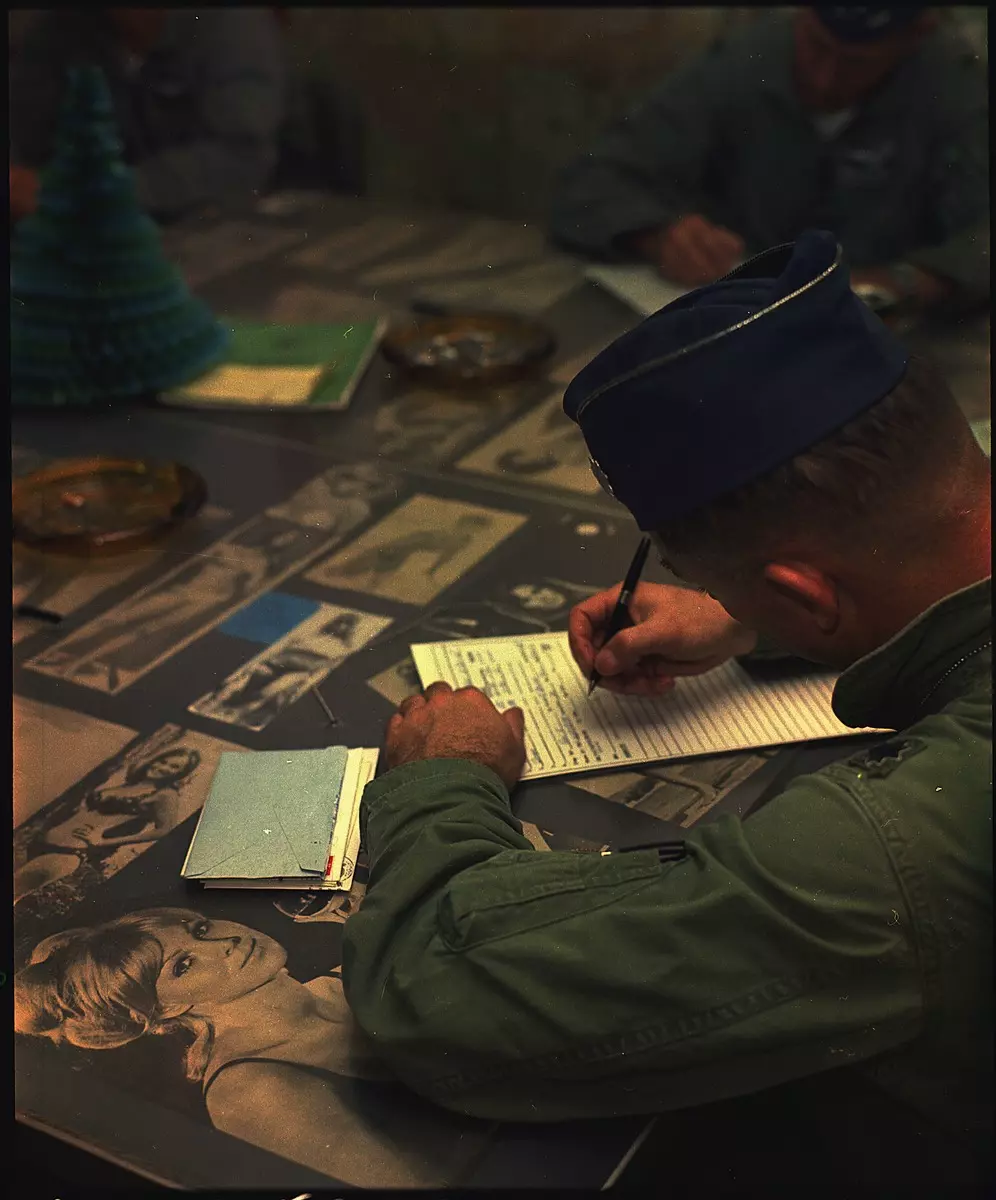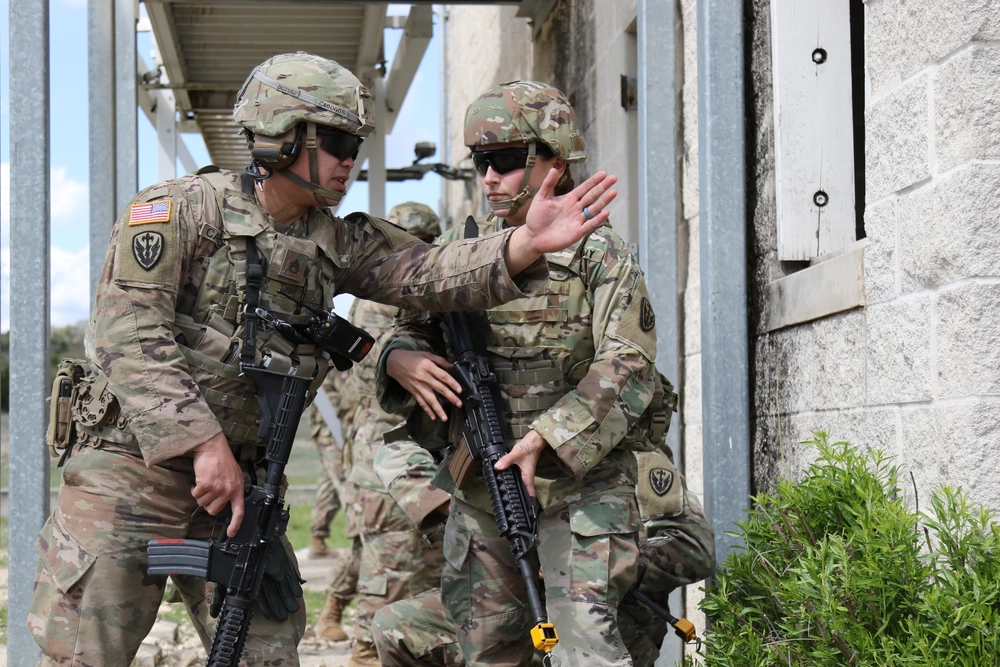These are America’s top military intelligence-gathering operations
- By We Are the Mighty
Share This Article

Let’s jump into the foxhole and discuss the very lifeblood of military ops – intelligence gathering. It’s like a massive, multi-player game of ‘Capture the Flag,’ but with less running and more cunning. From WWII all the way to the present day, military intelligence (MI) has played a key role in every single conflict. These ops underscore that intel isn’t just a sideshow. Usually, it’s the main event, an invisible hand guiding history’s course.
But what is MI, anyway?
Intelligence gathering in the military operates like the world’s most complicated jigsaw puzzle. Think of it as connecting dots, except each dot is a piece of information, and there’s no handy picture on the box to guide you. Data pours in from human sources (HUMINT), electronic and signals sources (ELINT & SIGINT), and our eyes in the sky, satellites (IMINT). If it sounds like a crazy alphabet soup of acronyms, you’re not wrong. Welcome to the world of military lingo.
The intelligence machinery takes these disparate data points and weaves them together into a coherent narrative – answering the who, what, when, where, and why. This process enables decision-makers to keep one step ahead on the geopolitical chessboard. So, let’s dive in and meet the teams that master this fine art in the United States.
Related: What is Signals Intelligence?
Military Intel by branch

The Army has its fair share of spooks and spies. With their magnifying glasses in one hand and the weight of the world in the other, they collect, analyze, and dish out intelligence like hot flapjacks at a Sunday brunch. They’re the ones ensuring we’re not caught with our camo-pants down when things start to sizzle on the battlefield.
Sliding over to our stalwart seafarers in the Navy, these salt-soaked sailors specialize in maritime intelligence. They’ve got their periscopes trained on everything from subaquatic shenanigans to anti-piracy parties. Have you ever seen a Navy SEAL? If you have, they ain’t doing their job right.
Taking a glance upward, let’s tip our hats to the Air Force intelligence branch, the eyes in the sky. These folks juggle air, space, and cyber intel like they’re headlining a Vegas show. If there’s a blip on the radar, they’re onto it faster than you can say, “Is that a UFO?”
Moving along, the Marines’s intelligence component, they’re the ones sifting through data like they’re on a treasure hunt, which they kind of are! They’re there to ensure that when it comes to ground combat, amphibious warfare, and special ops, the Marines always land on their feet. And on the enemy’s doorstep.
And let’s not forget about our unsung heroes, the Coasties. With a job bigger than trying to fold a fitted sheet, these defenders of the deep blue sea keep our shorelines safer than a duck in a bathtub. They’re collecting intel on everything from maritime law enforcement to rescue ops, ensuring the nation’s maritime interests stay afloat.
Related: Navigating through the rain at an Army bivouac camp
Alphabet soup – CIA, NSA, NRO
If international affairs were a theatre, the CIA would be the invisible puppeteers, yanking on strings from backstage. The CIA’s operations aren’t just covert meetings in dimly lit alleys. They’re involved in everything from counterterrorism to disrupting weapons proliferation. It’s a global operation – weaving narratives from countless threads to keep America safe.
Next in line are the ones who’d make any tech geek swoon – the NSA. Picture this: a colossal digital library housing every text, email, and phone call around the globe. They crunch these massive data sets to provide the intel to help our soldiers, sailors, airmen, and marines know what they’re walking into.
Last but not least, we have the eagle-eyed wizards of the National Reconnaissance Office (NRO). These guys are responsible for our nation’s reconnaissance satellites. It’s like having the world’s most powerful telescope, except it’s pointed down, not up. The NRO gives us the bird’s-eye view we need, tracking potential threats around the world. It’s like Google Earth on steroids, and the imagery they provide is a crucial part of the intelligence jigsaw puzzle.
Military Intelligence in major wars
World War II
Time travel with me back to the 1940s, the era of WWII. Amidst the chaotic theatre of war, intelligence played a role as critical as any bomber plane or infantryman. One operation that stands out is Operation Fortitude.
Operation Fortitude was an op part of the larger deception plan Operation Bodyguard, was a high-stakes game of bluff to convince Hitler that the D-Day invasions would occur in Pas de Calais, not Normandy. The tools of the trade? A fake army, inflatable tanks, and a web of double agents (think The Departed but with less Boston accents and more Morse code).
Meanwhile, British Intelligence was running the Double Cross System, turning German spies into double agents. The trick was not just catching these spies, but convincingly flipping them. These operations were pivotal in the successful D-Day invasions, showcasing the power of well-executed military strategy.
During WWII, British Intelligence ran an op so audacious, it reads more like a Hollywood script than a military plan. Operation Mincemeat involved the British planting a dead body with false invasion plans off the coast of Spain to mislead the Germans. The plan was a resounding success, helping to secure the Allied invasion of Sicily. Who said military intelligence was all about cracking codes and signals interception?
Related: Martha Gellhorn: The woman who snuck into the D-Day invasion
Intel of the Cold War

Fast-forward to the 1950s, and the Cold War is in full swing. It’s a different game now – less infantry, more intrigue. Enter Operation Gold. In a classic case of “my neighbor’s Wi-Fi is my Wi-Fi,” the CIA and Britain’s MI6 built a tunnel into Soviet-occupied Berlin to tap into their phone lines. For almost a year, the Allies listened in on Soviet communications, until a double agent spilled the beans. This op was short-lived but wildly significant. For Western intelligence, it showed that information was as valuable as any weapon.
Then there’s Operation Ivy Bells, an operation that Wired Magazine revealed. The U.S. Navy, in cooperation with the NSA, wiretapped underwater Soviet communication lines during the height of the Cold War. Think of it as high-tech eavesdropping at the bottom of the ocean. The operation remained a secret until a disgruntled NSA employee spilled the beans in the early ’80s.
Related: Mitch WerBell III: The Cold War’s most mysterious man
Korean War
Rewinding further to the Korean War, a significant op was Operation Chromite, the code name for the Inchon Landing. A masterstroke conceived by General Douglas MacArthur, it aimed to launch a surprise amphibious assault on the strategic port city of Inchon.
Behind this daring maneuver was a complex intelligence operation. As the CIA’s historical review program reveals, MacArthur’s team relied on a broad spectrum of intelligence to plan the operation. This included Human Intelligence (HUMINT) from Korean agents, who reported on tide and sea conditions, and Signal Intelligence (SIGINT) from intercepted North Korean communications. The operation is a prime example of how intelligence can shape not just battles, but the course of entire wars.
MI during the Vietnam War

Now, we’re in the ’60s and ’70s, in the thick of the Vietnam War. One notable military intelligence op was Operation Igloo White, a technological attempt to impede the flow of North Vietnamese soldiers and supplies along the Ho Chi Minh Trail.
A network of acoustic and seismic sensors was deployed to detect troop movements. This information was relayed to a central computer (nicknamed “Funny Money”) in Thailand, which then directed air strikes. While not entirely successful, it showcased the integration of technology and warfare.
Another intel-driven operation was Operation Cedar Falls. This was a major op aimed at destroying the Iron Triangle, a 60-square mile stronghold and logistical hub for the Viet Cong just north of Saigon. But before the bombs and artillery, came the intelligence. The operation started with gathering info about the Triangle from captured enemy documents, prisoners, aerial photography, and informant reports. This vital intel was used to plan the operation and to understand the location of enemy tunnels and fortifications. Then, in January 1967, around 30,000 U.S. and South Vietnamese troops stormed the Triangle, achieving significant strategic success.
The War on Terror

In the annals of military intelligence, Operation Glowing Symphony holds a unique place. It was the first offensive operation publicly acknowledged by the U.S. Cyber Command. Operation Glowing Symphony was launched in 2016. Its target: the Islamic State’s vast online propaganda machinery. The goal was to disrupt the ISIS media operation, which was used not only to broadcast their messages of terror, but also to recruit, radicalize and direct individuals around the world.
Think of this op as a digital surgical strike. The U.S. didn’t just unleash a virus and call it a day. Instead, they methodically dismantled the ISIS network. They cut off access to servers, deleted content, and locked ISIS members out of their accounts. They even collected a wealth of valuable intel during the operation, uncovering the identities of potential ISIS recruits. It’s like sneaking into an enemy’s office, stealing their files, and then changing the locks while you’re on the way out. What set Glowing Symphony apart wasn’t just its scale or success, but the paradigm shift it represented. It was an offensive operation that was entirely bloodless but tremendously effective. It underscored how cyber warfare is becoming an increasingly critical element of modern military strategy.
The ins and outs of Military Intelligence

So, there you have it! An all-you-need-to-know boot camp on the world of military intelligence. From unearthing enemy plans in WWII to waging cyber warfare on modern-day digital battlefields, MI plays a crucial role in keeping us one step ahead in the grand game of global geopolitics.
It’s not just about people in suits in dimly lit rooms or people in front of screens in covert locations. This is a complex, thrilling ecosystem of relentless data collection, analysis, and strategy. It’s the art of staying invisible while keeping everything visible.
In essence, the silent warriors that are the eyes and ears of our military, making sure Uncle Sam always has the upper hand. As you navigate through your day, remember – in the world of intelligence, nothing is as it seems.
Is this a world you’re ready to dive into? Suit up, because the intel world is always on the lookout for the next sharp mind ready to decipher the world’s complexities.
Feature Image: U.S. Army photo by Staff Sgt. Whitney Hughes
This article by Jessica Evans was originally published by We Are the Mighty.
Read more from Sandboxx News
- Which will be the company that will build America’s next stealth fighter?
- The German sniper mask – A visage of terror
- The Marines want to make their secret beach-swarming drones autonomous
- New Navy report reveals rare SEAL training attrition data
- The B-52 Bomber is getting more advanced radar than Russia’s Su-35 fighter
Related Posts
Sandboxx News Merch
-

‘AirPower’ Classic Hoodie
$46.00 – $48.00 Select options This product has multiple variants. The options may be chosen on the product page -

‘Sandboxx News’ Trucker Cap
$27.00 Select options This product has multiple variants. The options may be chosen on the product page -

F-35 ‘Lightning’ Framed Poster
$45.00 – $111.00 Select options This product has multiple variants. The options may be chosen on the product page
We Are the Mighty
Related to: Breaking News, Military Affairs, Special Operations

The CIA used miniature models to meticulously plan high-stakes operations

Who dares wins: The importance of defeat in being successful

Marines deploy new system to take out ships in the Pacific

British intelligence once hacked al-Qaeda just to mess with them
Sandboxx News
-

‘Sandboxx News’ Trucker Cap
$27.00 Select options This product has multiple variants. The options may be chosen on the product page -

‘AirPower’ Classic Hoodie
$46.00 – $48.00 Select options This product has multiple variants. The options may be chosen on the product page -

‘AirPower’ Golf Rope Hat
$31.00 Select options This product has multiple variants. The options may be chosen on the product page -

‘Sandboxx News’ Dad Hat
$27.00 Select options This product has multiple variants. The options may be chosen on the product page
